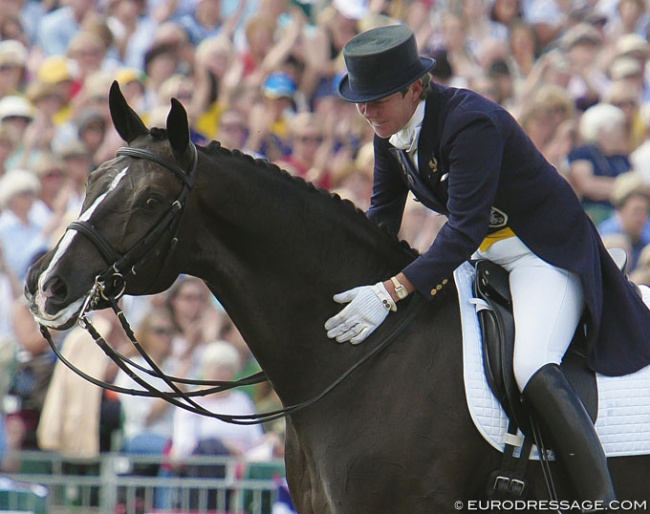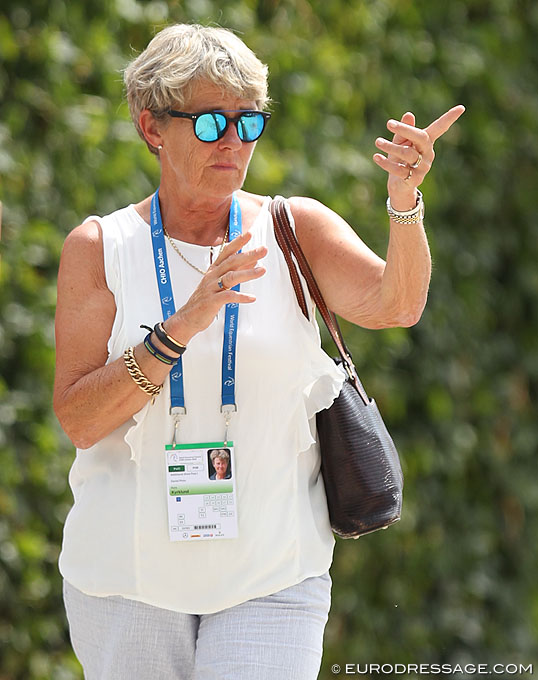
Kyra Kyrkland says she has always visualised herself riding. “One visualisation equals a physical exercise so you can speed up the automatisation," Kyrklund stated. It is said that it takes 1000 times doing something in a better position for your body to correct a bad pattern so surely doing everything you can to speed up the process can’t hurt!
When I first started riding dressage tests my mother would tell me to ride my test in my head when I went to bed. I would lie down and close my eyes and picture myself on my horse and I would visualize myself performing the test. I would set up the bend for the corners and prepare for the transitions and go through the test mentally step by step. It helped a lot, and often the things that I would forget when visualizing the test were the same challenges I faced in the actually test.
What we think we become. This applies so much in dressage. At some stage during a rider's career they are normally faced with a lack of confidence. It may happen from a single fall or from a horse that gets tense. It might start after having children when you realize you just can’t afford to fall off.
For some of us, myself included, it sort of feels a bit like failing. Suddenly the thing you have done your whole life, what you are most passionate about, gives you nervous butterflies and rapid heart beats. You find yourself constantly over-thinking what might happen and what could happen and wondering when it will happen.
A lot of riders give up at this point, while many come through it as better riders with a greater awareness of their limitations and ability. Kyra says that while she never went through a low confidence phase she has always taken measures to prevent accidents from happening.
” I am careful," said Kyra. "With time and experience you can “read” a horse and I do try to avoid situations that can be dangerous. Too fresh a horse: lunge it, have a neck strap on a young horse or a strap on the saddle. Don’t suddenly punish with the spurs or whip, etc.”
As riders we first need to limit the factors that we can control: is your horse too much for you? Is your equipment the safest you can get? Do you ride at a time when you know he is calmer? Do you avoid putting yourself in situations, where possible, that you know will only cause you and your horse unwanted stress? Every rider who has suffered some sort of riding injury knows that you have to be smart and understand that, yes things can happen but you must try to prevent them as much as possible!

Once you have come to your own understanding of how much you can prevent, which is of course an individual thing based on many factors both economic and environmental, then you need to work on your mental preparation. Riding doesn’t start and end when you go to and from the stable.
This is where visualization can also help. You must visualize yourself riding with confidence and feeling in control. It may sound corny but put on an inspirational song even, and visualize yourself taking charge, feeling light and relaxed in the saddle, on a horse that is listening to you, focused on you, the two of you in your own bubble away from the rest of the world. Then once you have created that feeling of confidence try to focus on the things you need to work on. Is my left leg drawing up? Am I shifting my weight to the left? Are my reins even or am I pulling my left hand back?
Kyrklund believes every mental practice counts as a physical one, particularly if you are trying to alter a learned behaviour or compensation that your body has got used to. And above all imagine that you and your horse are enjoying it.
Breathe that in, feel it, and then create it.
Text by Sarah Warne - Photos © Astrid Appels
Related Links
Sarah Warne's "Classical Training" Articles on Eurodressage
Kyra Kyrklund Awarded with Finnish Pro Sports Prize
Kyra Kyrklund and Jan Jönsson Appointed Professors of Equitation in Sweden